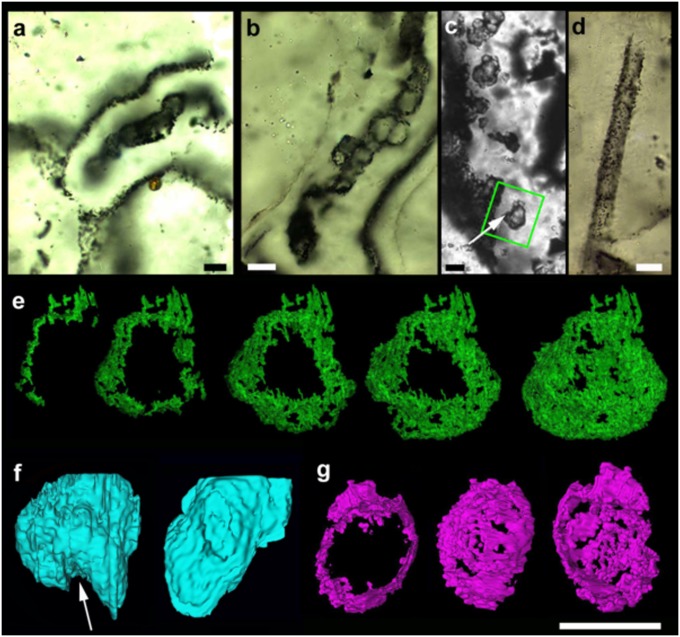Fig. 5.
Indigenous microfossils preserved within beach-rock dripstone microfabric in chertified quartz arenites of the 3.43-Ga Strelley Pool Formation, Western Australia. (A−D) Optical light micrographs of petrographic thin sections. (A) Chain of globular cells, preserved by enclosure within a microstalactite (see also Fig. S9). (B) Chain-like cluster of globular cells, here preserved within a thin chert lamina draped around a quartz grain (see also Fig. S7). (C) Isolated elliptical cells, here preserved within a chert-filled void between quartz grains. (D) Sheath-like tube preserved within a chert filled void between quartz grains (see also Fig. S8). (E−G) The 3D reconstructions of two cells from the same sample, using FIB-SEM sequential slicing. (E) Five successive stages of reconstruction of cell 1 (arrowed in C) showing a thin, hollow, crumpled wall of carbonaceous matter (green), pierced by holes from decomposition and silica growth. (F) Reconstruction of the silica-filled interior of the same cell (pale blue), showing potential external fold (arrow; unlike botryoidal silica). (G) Three views (partial, exterior, interior) of cell 2 from the same thin section, showing a thin, hollow, crumpled and pierced carbonaceous wall (purple). (Scale bar, 10 μm.)

